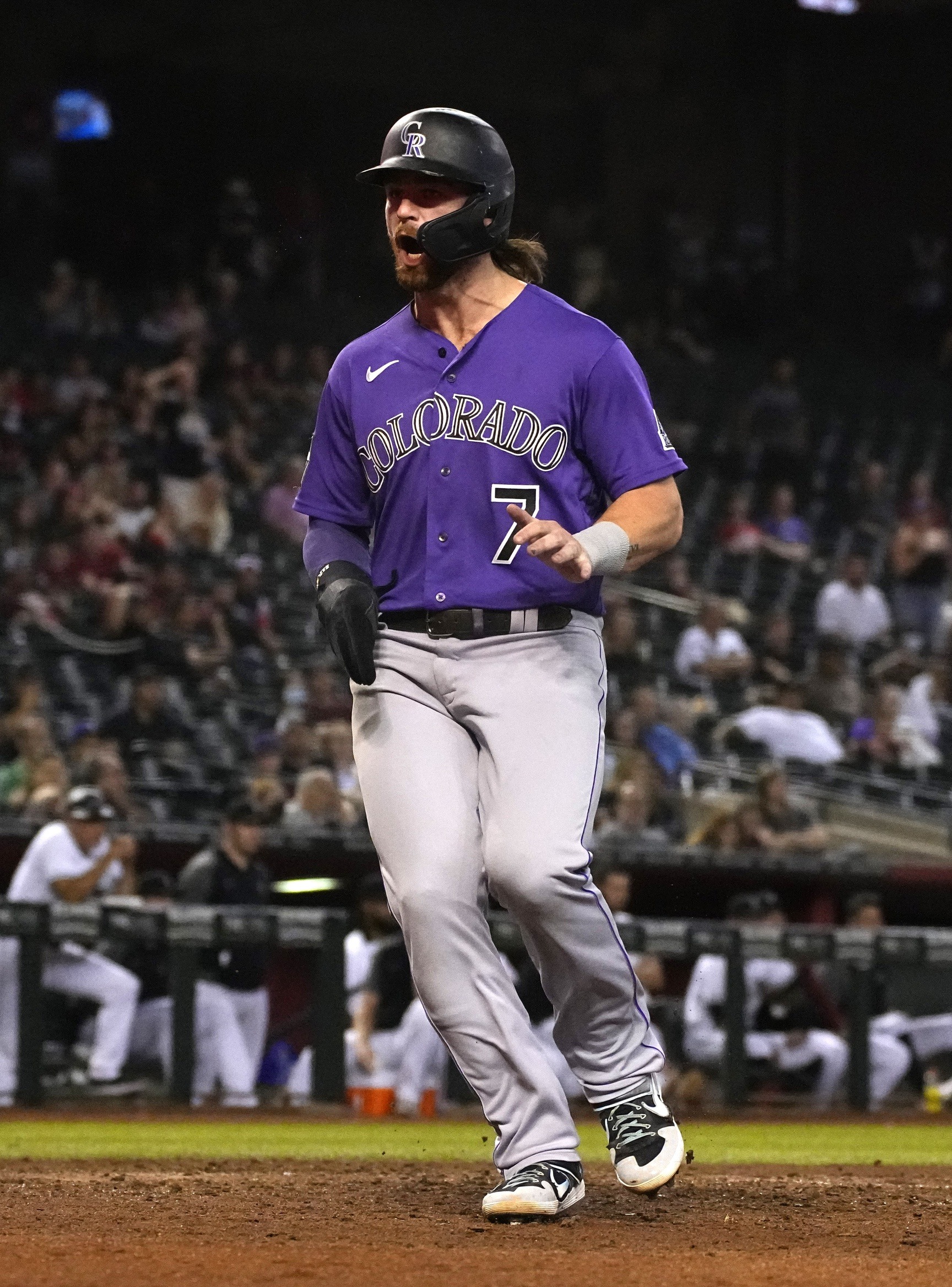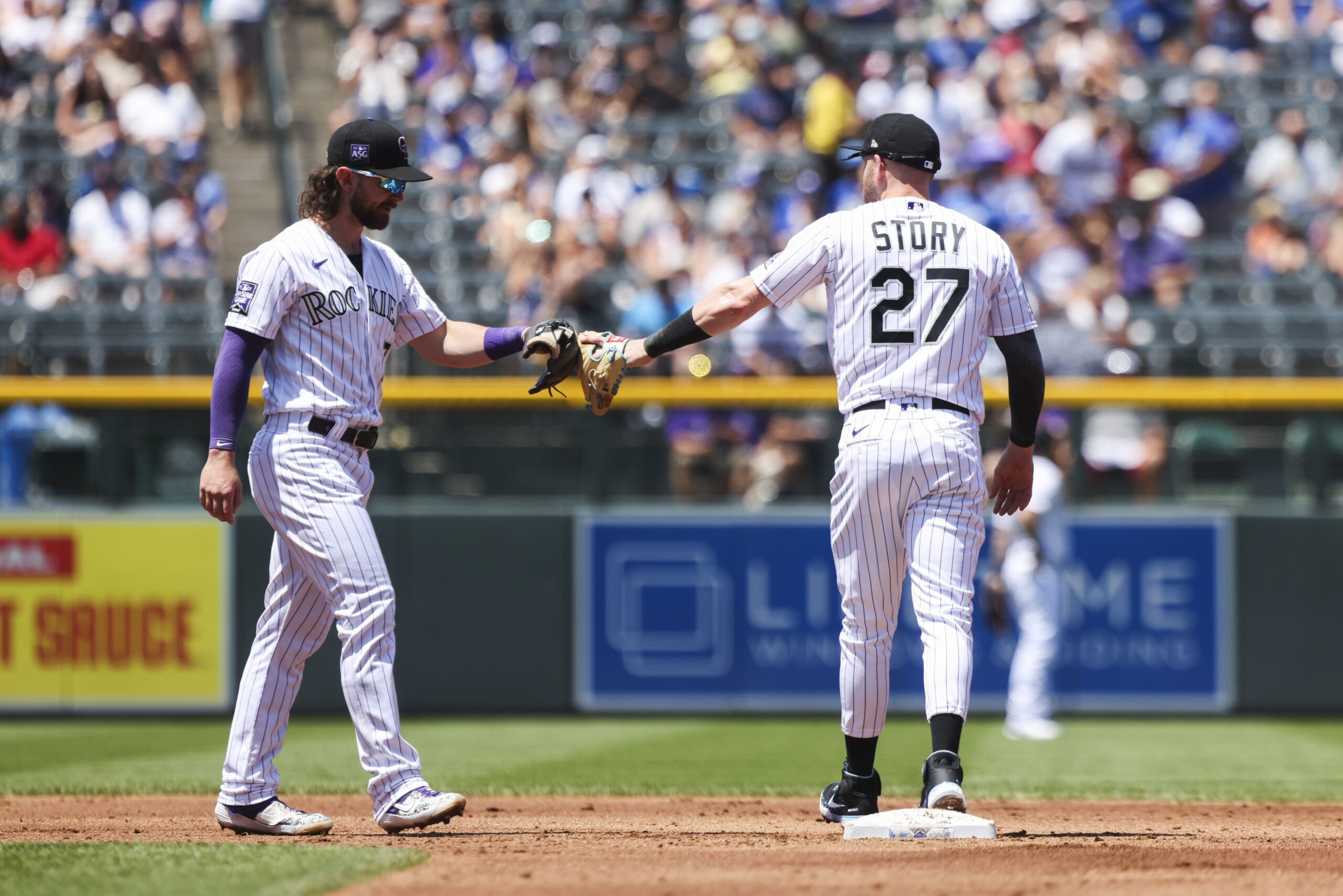© 2025 ALLCITY Network Inc.
All rights reserved.

Context is king.
This has very much flown out the window in the last few years as sound bites have joined forces with a 280 character-limit causing society to lose all ability to decipher what anything means in the greater sense.
As such, it feels like a good time to attempt to uncover it all for Brendan Rodgers and put his first real big league season into some context… at least that was the intent going into this.
After missing Opening Day 2021 and the first seven weeks of the season due to a hamstring issue, he finally debuted on May 21. Rodgers wouldn’t find his groove until a two-run double on June 3 helped spark an 11-6 win at home against Texas.
From that point forward he batted .296 with 15 home runs and 46 runs batted. He was worth 1.9 fWAR, same as former Rockies’ second baseman DJ LeMahieu and infielder Eduardo Escobar, who just signed a two-year, $20 million contract with the New York Mets.
His value in wins-above-replacement beginning on June 4 was identical to teammate C.J. Cron, who recently received a two-year, $14.5 million renewal from Colorado; it trailed only Trevor Story (2.8) and Elias Díaz (2.3), who was also extended for $14.5 million, albeit for three years.
Making just $575,500 this past season, Rodgers has been worth a lot more than league minimum. And maybe this is the best context to consider for him, his value far beyond his paycheck, at least until one recalls how much was originally expected from an 18-year-old shortstop out of Lake Mary, FL.
Drafted third overall in 2015 behind two players from the college ranks, both of whom have now won a World Series, the now 24-year-old second baseman is just getting his start in the Majors. Comparing Rodgers to that duo of infielders – Dansby Swanson of Atlanta and Alex Bregman of the Houston Astros – would not be appropriate. Check back in a few years.

Fellow Florida high schooler Kyle Tucker, taken two spots after Rodgers with the fifth pick, would be a more apt comparison at this time. Tucker has been outstanding with the Astros and has already accumulated 7.6 bWAR, fifth-most of those taken in the first round that year.
Conversely, the Philadelphia Phillies’ 10th overall selection Cornelius Randolph was also a high school shortstop drafted with high expectations. Now a corner outfielder, he’s yet to make his Major League debut and recently became a minor league free agent after batting only .234/.323/.386 in Triple-A this past season.
Here, Rodgers is stuck in the middle, a common theme throughout this exercise of understanding any projections.
Let’s shift our perspective to look in historical terms as it pertains to the Colorado Rockies. How many players have had at least one plate appearance with the franchise before their age-25 season?
Answer: 117. Congrats to Quinton McCracken, Garvin Alston, Juan Morillo, Edwar Cabrera, Yency Almonte and Ryan Feltner for squeaking onto the list with one career plate appearance in purple at age-24 or younger.
The cutoff should be players with more than 200 plate appearances before their age-25 season, especially since Jamey Wright (190) and Germán Márquez (184) are looking to screw up these rankings should PA threshold get any lower.
That gives us 29 players to help give some context to how good, bad or indifferent the start has been to Rodgers’ career and how high or low it could end up. That group is composed of eight players who have represented Colorado in the All-Star Game and two others who did it after their time in Denver. Twelve are still active in some shape or form.
First glance is at the home run totals. What apple pie is to America is what home runs are to the Rockies. Yes, America didn’t invent the delicious treat for which it is synonymous and the same is true for the long ball at Coors Field. Blame the European settlers for bringing apple trees to our country and the Blake Street Bombers for creating these stereotypes about souvenirs galore pelting the left field bleachers.
Rodgers is near the middle of the home run list, ranking 12th with 15 dingers, all collected in 2021. Shifting to at-bats-per-home-run, he does a bit worse, ranking 14th with 32.27 ABs per HR, just behind Matt Holliday (28.57) and just ahead of Josh Rutledge (37.47). We know which of those two we’d like to see his career gravitate towards the most.
How about doubles? Those have always been a good indicator of future power. (Home runs are an even better indicator of future power, too, obviously. After witnessing 22-year-olds Vlad Guerrero Jr. and Fernando Tatis Jr. mash over 40 this year and Juan Soto falling two short of the century mark already for his career, this same activity of context isn’t needed quite as much to determine the other-worldly destiny of this trio.)
With 24 two-baggers, Rodgers is 17th on the list between the pairing of Brent Butler (25) and Roberto Mejia (23). By at-bats-per-doubles, he drops to 19th with one two-base hit every 20.17 at-bats, smack dab in the middle of Juan Uribe (19.58) and Wilin Rosario (20.43). Turns out that lower ranking actually puts him in a much better class.
Since we’re talking about prodigious pop, the obvious indicator is slugging percentage. At .421, Rodgers is 15th in our group behind Ryan McMahon (.424) and just ahead of Jason Bates (.419).
Even taking OPS+, a statistic that adjusts for ballpark factors and the league average from year-to-year, Rodgers is still ranked 15th with an 84 OPS+, this time between José Ortiz (89) and Bates (84). Every step forward in excitement is welcomed with an equal distance step back during this process.

What if we just isolated the best age-24 seasons in Rockies history to put aside the rough start Rodgers had in 2019-20?
During those first 32 games across two injury-plagued seasons, Rodgers had a slash line of .196/.235/.227 over 102 plate appearances, good for an OPS+ of only 16 and -1.0 wins-above-replacement, according to Baseball Reference. That seems hardly indicative of the player, especially if you’ve watched him at the plate even once at any of his stops along the way in the minor leagues.
Players with an OPS+ of under 25 don’t last very long. Outside of Bill Bergen (1901-1911), one of the worst hitters of all-time who provided outstanding defense behind the plate over a century ago, no one has ever managed to compile more than 607 plate appearances in their career with such extreme lack of success at the plate. Rodgers easily removed those doubts in ’21.
Going back into the database of Rockies all-time statistics, only 97 players have ever registered an at-bat in their age-24 season with the franchise and 31 of them had at least 100 plate appearances.
This excludes a few interesting names like Raimel Tapia and Garrett Atkins. For all the value Tapia has supplied in the last two seasons, it was all done at age 26 and 27. Atkins didn’t get going until he turned 25 and finished fourth-place in the 2005 National League Rookie of the Year Award voting.
With all that out of the way, Rodgers compares much more favorably amongst other 24-year-olds with the Rockies. He’s still way behind the legends like Carlos González, Troy Tulowitzki, Todd Helton and Nolan Arenado, not to mention flash-in-the-pans like David Dahl and Rosario, but he’s still nestled between a strong tandem.
Rodgers is 10th among the 31 in this group according to OPS (.798), but eighth according to OPS+ (102) between Holliday (103) and Corey Dickerson (98).
Following those age-24 seasons with Colorado, Holliday was worth 18.0 bWAR over his next four seasons and was selected to the All-Star Game three-times during this period while Dickerson was worth 7.9 bWAR and was elected by fans to start the 2017 All-Star Game as the American League designated hitter while with the Tampa Bay Rays.
If you’re tired of all those mental gymnastics to determine the future of this young man, you’ve got to believe Rodgers is as well. He’s been a first-round pick with the world on his shoulders for the past six years, ready to become Colorado’s next Story and prove he’ll be nothing like Chris Nelson, Kyle Parker or Greg Reynolds.
In time, he’ll figure out his proper place on the spectrum of comparisons based on his accomplishments on the field. Now, let’s enjoy seeing who he is in 2022.
Comments
Share your thoughts
Join the conversation



